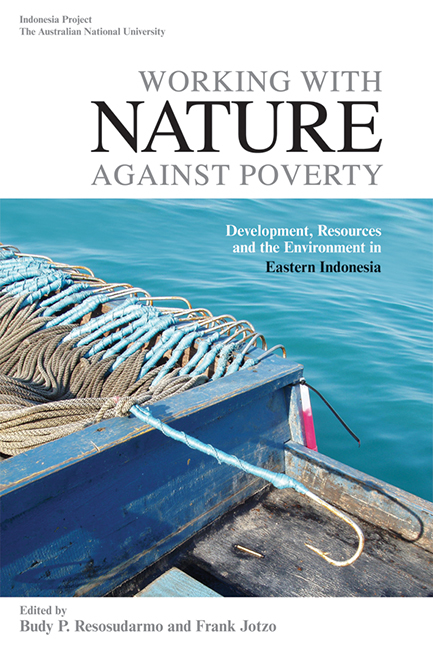Book contents
- Frontmatter
- Foreword
- Contents
- Figures and Maps
- Tables
- Contributors
- Acknowledgments
- Glossary
- Map
- 1 Development, Resources and Environment in Eastern Indonesia
- PART I ECONOMIC DEVELOPMENT AND POVERTY ALLEVIATION
- PART II NATURAL RESOURCES AND THE ENVIRONMENT
- PART III CONFLICT, LOCAL DEVELOPMENT AND HEALTH
- 12 Maluku: The Long Road to Recovery
- 13 Improving the Livelihoods of the Poor: Challenges and Lessons from East Nusa Tenggara
- 14 How Far Is Papua from Achieving the Goals of Healthy Indonesia 2010?
- Index
12 - Maluku: The Long Road to Recovery
from PART III - CONFLICT, LOCAL DEVELOPMENT AND HEALTH
Published online by Cambridge University Press: 21 October 2015
- Frontmatter
- Foreword
- Contents
- Figures and Maps
- Tables
- Contributors
- Acknowledgments
- Glossary
- Map
- 1 Development, Resources and Environment in Eastern Indonesia
- PART I ECONOMIC DEVELOPMENT AND POVERTY ALLEVIATION
- PART II NATURAL RESOURCES AND THE ENVIRONMENT
- PART III CONFLICT, LOCAL DEVELOPMENT AND HEALTH
- 12 Maluku: The Long Road to Recovery
- 13 Improving the Livelihoods of the Poor: Challenges and Lessons from East Nusa Tenggara
- 14 How Far Is Papua from Achieving the Goals of Healthy Indonesia 2010?
- Index
Summary
INTRODUCTION: AFTER THE STORM
On 27 February 2002, two weeks after the signing of the Malino Peace Accord II (Perjanjian Malino II), a few hundred young Muslim and Christian men from the island of Haruku—one of the tiny Lease islands east of Ambon—rode together into Ambon and began marching through the town, disregarding the barricades that divided the war-torn city into ‘red’ and ‘white’ zones. They sang nationalistic songs, hugged spectators and urged them to join the procession. Police and military personnel joined in as the crowd circled its way towards the governor's office. Later that day, Governor Saleh Latuconsina told the cheering crowd, ‘From now on, Ambon is free from conflict’ (Böhm 2005; Jakarta Post 2002a).
Ambon remained partitioned for a few more months, and there continued to be occasional bomb explosions and sniper attacks. The most serious threat to peace came in April–May 2004, when rallies in celebration of the anniversary of the Republic of South Maluku sparked several days of fighting and arson in Ambon. But the people and government of Maluku had clearly had enough, and peace continued to deepen and solidify.
This chapter examines aspects of the conflict in Maluku, analyses factors contributing to the spread and perpetuation of the conflict, and looks at how it finally ended. This is followed by an examination of sociopolitical trends and developments in the province since the cessation of hostilities. The problems of recently returned or not yet returned refugee families merit special attention, along with the lingering segregation and tensions that still plague communities in many parts of the province. The chapter concludes with a discussion of attempts—by regional government agencies and various civil society actors—to revive and reform customary village (negeri) forms of government in an effort to build a more stable and resilient society.
- Type
- Chapter
- Information
- Working with Nature against PovertyDevelopment, Resources and the Environment in Eastern Indonesia, pp. 269 - 304Publisher: ISEAS–Yusof Ishak InstitutePrint publication year: 2009



